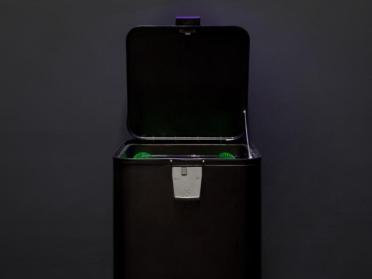Cold War Dishwasher (Uranium Glass)

Trained in biology and landscape architecture, Max Hooper Schneider’s practice features a post-apocalyptic world deserted by man, where nature is allowed to run wild. His work Cold War Dishwasher (Uranium Glass) presents an ecosystem that stands at the intersection between the animal and mineral kingdoms and humankind. The artist found the first dishwasher marketed in the United States during the “Trente Glorieuses” (the thirty years from 1945 to 1975 following the end of the Second World War) and filled it with dishware sold during the Cold War that contains low levels of uranium. An imaginary vestige of the atomic age, the environment is populated by strange fish with iridescent properties. Cold War Dishwasher (Uranium Glass) therefore creates a collusion between the life sciences and post-war consumer society, exhibiting one of the possible effects of the Anthropocene.
Exhibitions
MO.CO Panacée, Montpellier (France)
from 27 Jan to 23 Apr 2017